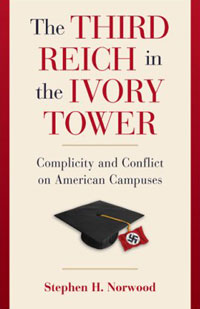Rats in the Cathedral

Given the prodigious and intense scholarship devoted to all manner of subjects--central and tangential--to the Holocaust (or "Shoah" as some Jews prefer to call it), it is an encouraging sign that new information or new ways of looking at what we know are still being unearthed.
In The Third Reich in the Ivory Tower: Complicity and Conflict on American Campuses (Cambridge University Press), Stephen H. Norwood provides a disturbing--perhaps to some--even shocking account of the nexus existing between the American academy and Nazi Germany. He writes:
In order to understand the whole course of development that leads us to the Holocaust, I think it's very important to see what influential sectors in the United States were doing. And in the case of higher education, it's a very shameful record of complicity and indifference to atrocities committed against the Jews from 1933 onward--and actually a lot of collaboration, in terms of participating in well-organized student exchange programs, participating in well-orchestrated Nazi festivals in Germany, sending delegates to those and ignoring protests.
How this came to be is no surprise as Norwood elaborates:
They just didn't care very deeply about Jews and anti-Semitism because they were themselves involved in maintaining quota barriers against Jewish students. There were very, very few Jews on the faculties of American universities throughout the entire inter-war period. And there are whole fields that were basically off-limits to Jews.
This tome is being touted as "the first systematic exploration of the nature and extent of sympathy for Nazi Germany at American universities during the 1930s"--which falls into the "better late than never" category of inquiry.
